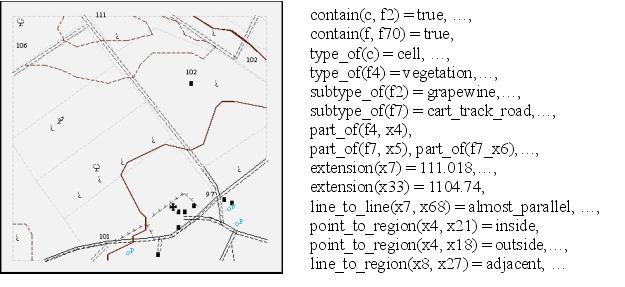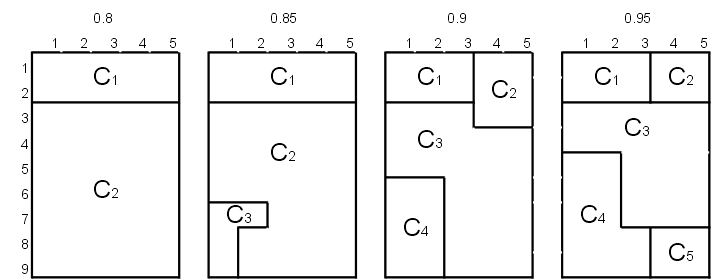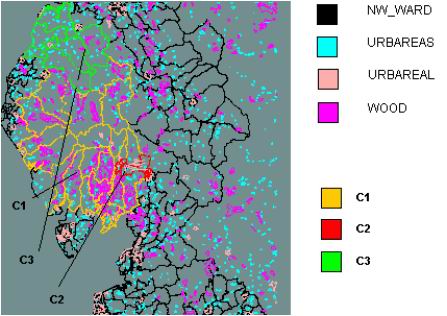|
A short description Experimental results: Topographic map interpretation Geo-referenced census data analysis The distribution package Related publications Authors & Aknowledgement Contact |



| Package | Requirements | Description |
| CORSO (2032 KB) | O.S.: MS Windows 95/98/2000/ME/XP Needed space on HD: 11.1 MB J.R.E. version: 1.5.0 or later |
This package includes two main components: a client part, named RGDBSCAN, and a server part, named ATRE4J. The first one has been developed in Java and implements the CORSO algorithm; its name stems from the likenesses with respect to RGDBSCAN algorithm, even if CORSO is a completely different clustering method, by now. The second component, in turn, is composed by a Java written wrapper and the ATRE learning system (executable on Windows platforms); this component deals with the clusters model calculation. After downloading, unzip the file into a user chosen directory on HD and execute the 'corso.bat' batch file by DOS command line. This batch file automatically launch the ATRE server and the clustering client according to the provided command line arguments; a comprehensive help on program usage can be consulted by typing 'corso' (with no arguments) by DOS command line. Alternatively, user can manually launch both the ATRE server and the clustering client either by using the batch files in the corresponding subfolders (in this case, the 'rgdbscan.bat' file has to be modified to change the input parameters) or by DOS command line. |
| Name | Email address | Tel. number | Fax |
| Annalisa Appice | appice _AT_ di.uniba.it | +39 080 5443262 | +39 080 5443262 |